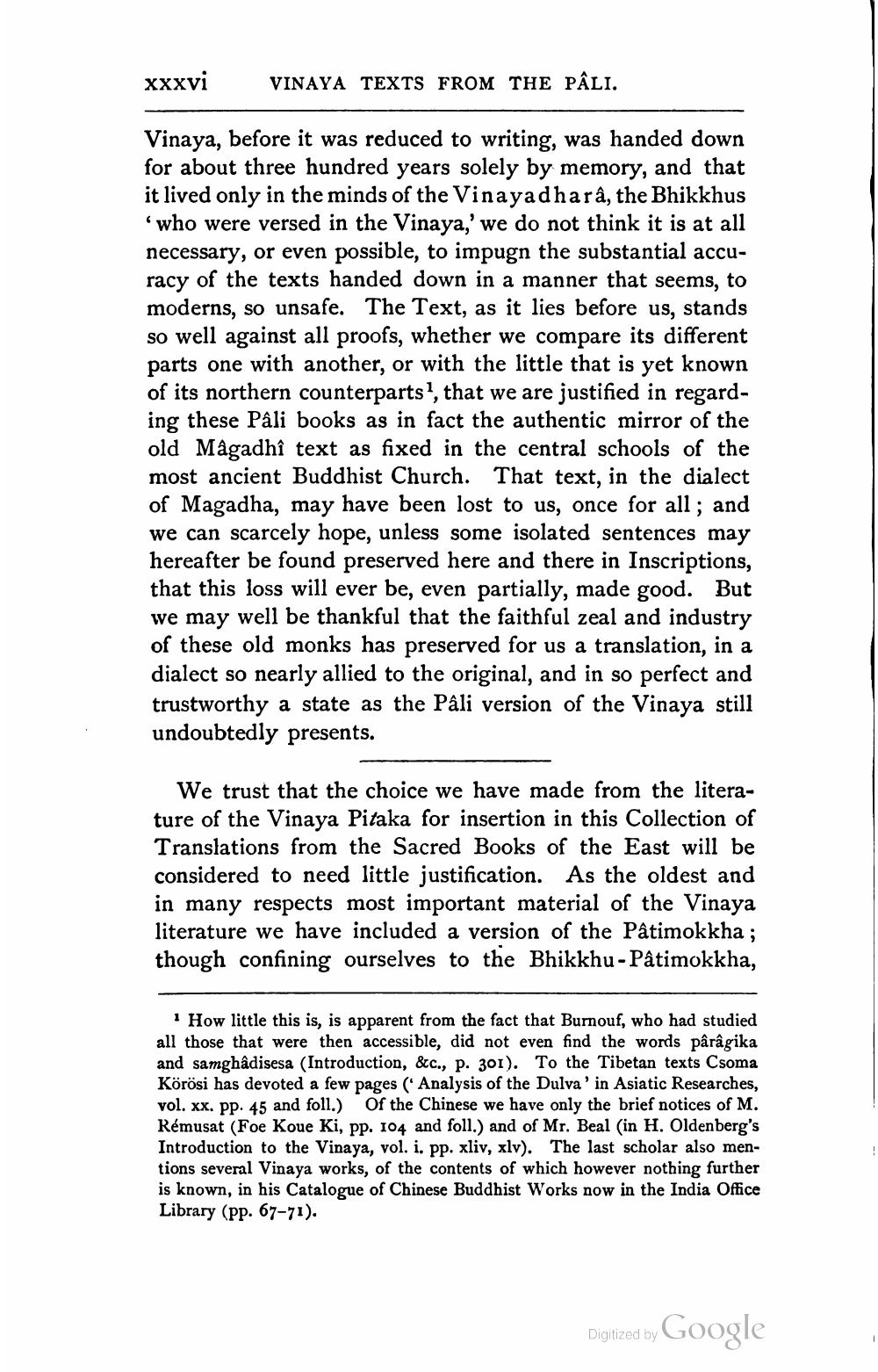________________
xxxvi
VINAYA TEXTS FROM THE PÂLI.
Vinaya, before it was reduced to writing, was handed down for about three hundred years solely by memory, and that it lived only in the minds of the Vinayadharâ, the Bhikkhus
who were versed in the Vinaya,' we do not think it is at all necessary, or even possible, to impugn the substantial accuracy of the texts handed down in a manner that seems to moderns, so unsafe. The Text, as it lies before us, stands so well against all proofs, whether we compare its different parts one with another, or with the little that is yet known of its northern counterparts", that we are justified in regarding these Pâli books as in fact the authentic mirror of the old Magadhî text as fixed in the central schools of the most ancient Buddhist Church. That text, in the dialect of Magadha, may have been lost to us, once for all; and we can scarcely hope, unless some isolated sentences may hereafter be found preserved here and there in Inscriptions, that this loss will ever be, even partially, made good. But we may well be thankful that the faithful zeal and industry of these old monks has preserved for us a translation, in a dialect so nearly allied to the original, and in so perfect and trustworthy a state as the Pâli version of the Vinaya still undoubtedly presents.
We trust that the choice we have made from the literature of the Vinaya Pitaka for insertion in this Collection of Translations from the Sacred Books of the East will be considered to need little justification. As the oldest and in many respects most important material of the Vinaya literature we have included a version of the Pâtimokkha ; though confining ourselves to the Bhikkhu-Pâtimokkha,
1 How little this is, is apparent from the fact that Burnouf, who had studied all those that were then accessible, did not even find the words pârâgika and samghâdisesa (Introduction, &c., p. 301). To the Tibetan texts Csoma Körösi has devoted a few pages (Analysis of the Dulva'in Asiatic Researches, vol. xx. pp. 45 and foll.) of the Chinese we have only the brief notices of M. Rémusat (Foe Koue Ki, pp. 104 and foll.) and of Mr. Beal (in H. Oldenberg's Introduction to the Vinaya, vol. i. pp. xliv, xlv). The last scholar also mentions several Vinaya works, of the contents of which however nothing further is known, in his Catalogue of Chinese Buddhist Works now in the India Office Library (pp. 67-71).
Digitized by Google




